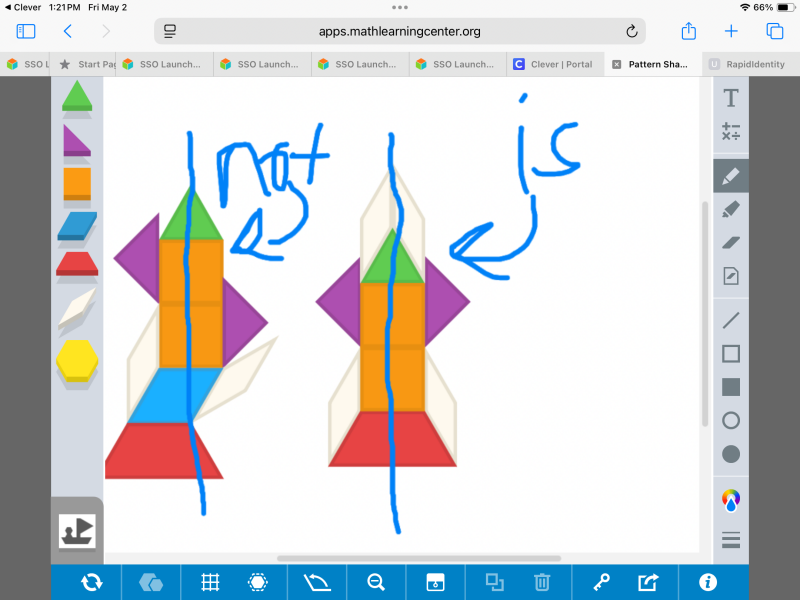Teaching & Assessment ~ Lesson Reflection
In my lesson, I focused on the concept of symmetry in real-world objects and shapes. Before the lesson began, students received links to online resources through Clever Messages and accessed them using iPads. Organized into groups, the students were responsible for navigating the website and creating their digital products in a timely and responsible manner. They were highly responsive, engaged, and interactive throughout the process.
We started with a Google Slides presentation that reminded students about symmetry and how to identify it in everyday items, such as gift boxes, salt containers, and canned goods. They learned that symmetrical objects mirror each other. Building upon their existing knowledge of shapes, students interacted with the shape-sorting website, Pattern Shapes by The Math Learning Center. There, they used online manipulatives to identify the symmetry of 2D and 3D shapes and create their own digital products that demonstrated symmetry, assessing their understanding of the concept.
Next, students explored simulated virtual reality through Nearpod, where they examined symmetry in real-life objects. To reinforce their understanding of polygons and parallelograms, students accessed a specific website, https://www.interactive-maths.com, to create uniquely shaped designs that highlighted lines of symmetry.
While the creative component kept students engaged, the website presented challenges. It functioned well on the ViewSonic board but struggled on students' devices. For some, the site worked perfectly; for others, it didn't work at all, leading to frustration and disengagement, which posed challenges for classroom management. To address this, students were allowed to collaborate with a partner and submit their work as a group assignment.
Overall, the technology and websites utilized kept most students responsive and engaged, especially while working with online geoboards, the VR session, and shape manipulatives. They enjoyed creating art pieces that incorporated symmetry. I was able to observe the struggles some students had with the learning target; however, it became apparent that I had not fully considered the creative abilities of all students. Some students were disinterested in completing the assignment but still felt compelled to finish it for a grade. Additionally, I noticed a level of disconnect among higher-level students. Although advanced learners remained engaged, they became bored, highlighting my need to provide more differentiated instruction. Moving forward, I plan to consult with colleagues to learn how they effectively apply rigor in their instruction to better differentiate for advanced learners.
By the end of the lesson, students could accurately label and identify lines of symmetry and verbally use mathematical vocabulary, indicating that all objectives were met.

